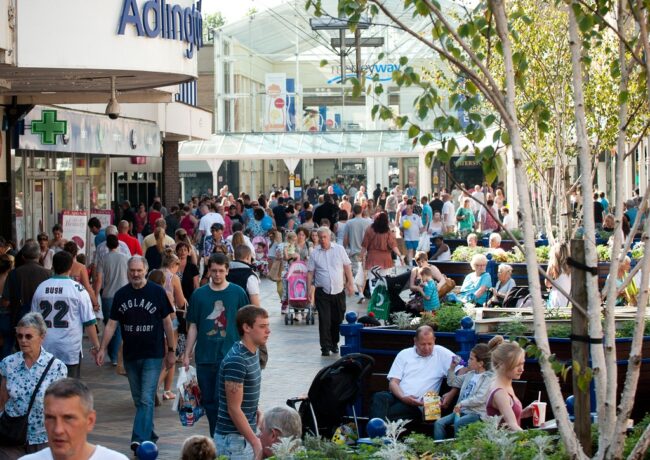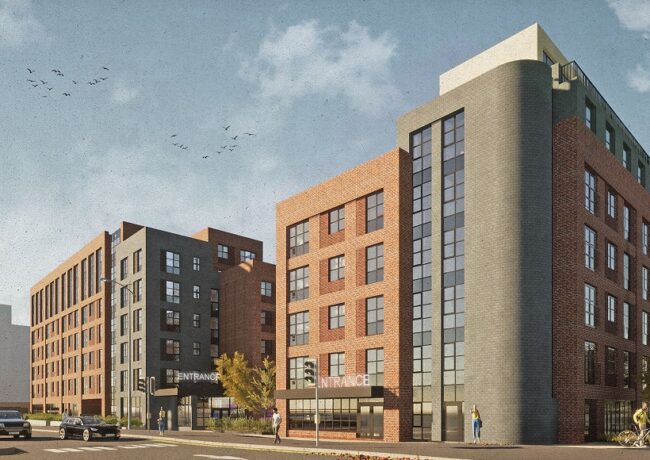Region bears brunt of retail rents fall
The North West has suffered the greatest decline in retail rents in the United Kingdom in the past 12 months, according to the latest research by real estate advisors Colliers International.
Among the town centres suffering most from the wider decline of the high street is Stockport, where retail rents dropped by 25.9% in the past year and by 47% from £190 a sq ft to £100 a sq ft since the onset of the financial crisis in 2008.
In Southport, retail rents dropped by 16.7% in the past year and by 41.2% from £85 a sq ft to £50 a sq ft since the onset of the financial crisis in 2008. Bootle and Birkenhead also witnessed a significant drop in average rent since 2008 with a 28.6% and 27.3% decline respectively.
Liverpool saw a 17.2% fall over the same period.
In the North West as a whole, retail rents declined by 5.5% in the past year and by 18% from an average of £108 a sq ft to £88 a sq ft since 2008.
The Midsummer Retail Report by Colliers International repeats a call it made in 2012 for the Government to reverse its decision to postpone a revaluation of business rates from 2015 to 2017.
Colliers believes that the postponement – which means retailers and other businesses continue to pay rates based on pre-recession property values – could devastate what it had dubbed "terminal towns" such as Rochdale, Barrow-in-Furness and Whitehaven, Cumbria.
Despite the decline of retail rents in the North West in the past year, the region performed relatively strongly when compared to the rest of Great Britain over the past five years.
The worst performances since 2008 were registered by Wales and the North East of England where rents collapsed by 31%, followed by the West Midlands, down by 25% and the whole of the Midlands and the South West, where rental levels slipped by 23% over the same period.
The only parts of the United Kingdom to record a rise in retail rents were central London and all of London, which recorded increases of 15% and 11% respectively since 2008.
The weighted average for UK retail rents showed a fall of 15%, according to the MSRR.
Colliers International reported that about 55m sq ft of retail space was vacant in the UK – representing some 12% on total non-food floor space and almost double the amount that stood empty in 2006.
The MSRR revealed that vacancy rates were "very polarised" with prime locations in major regional shopping centres such as Manchester and Liverpool outperforming secondary locations in those centres with vacancy rates of just 6% and up to 17% respectively.
The report cites the Trafford Centre as a classic example of a strongly performing prime location in a major regional centre – it said vacancy rates at such centres ranged from 2% to 5%.
Colliers International forecasted that the high street would see a gradual recovery by 2020 with the overall vacancy rate falling from 12% to about 7% – taking it back to the level seen in the pre-financial crisis year of 2006.
But it warned that the recovery would be "selective" – with major retail centres enjoying the largest decline in vacancy rates and medium-sized shopping centres seeing the least.
Colliers International retail director Tom Cullen said the major reasons for failing towns were reduced consumer spending because of the prolonged economic downturn, excessive competition and retail over-development.
But he added that the Government had to shoulder much of the blame for failing to address the issue of declining high streets since the issue first arose in 2008.
Cullen said: "The decision of Government to delay the rates revaluation has left a massive burden on those high streets where decline has been the greatest and we call on the Government to introduce a revaluation now.
"We're in a position where central London shops are effectively being subsidised by those in Wales and the North East of England."




